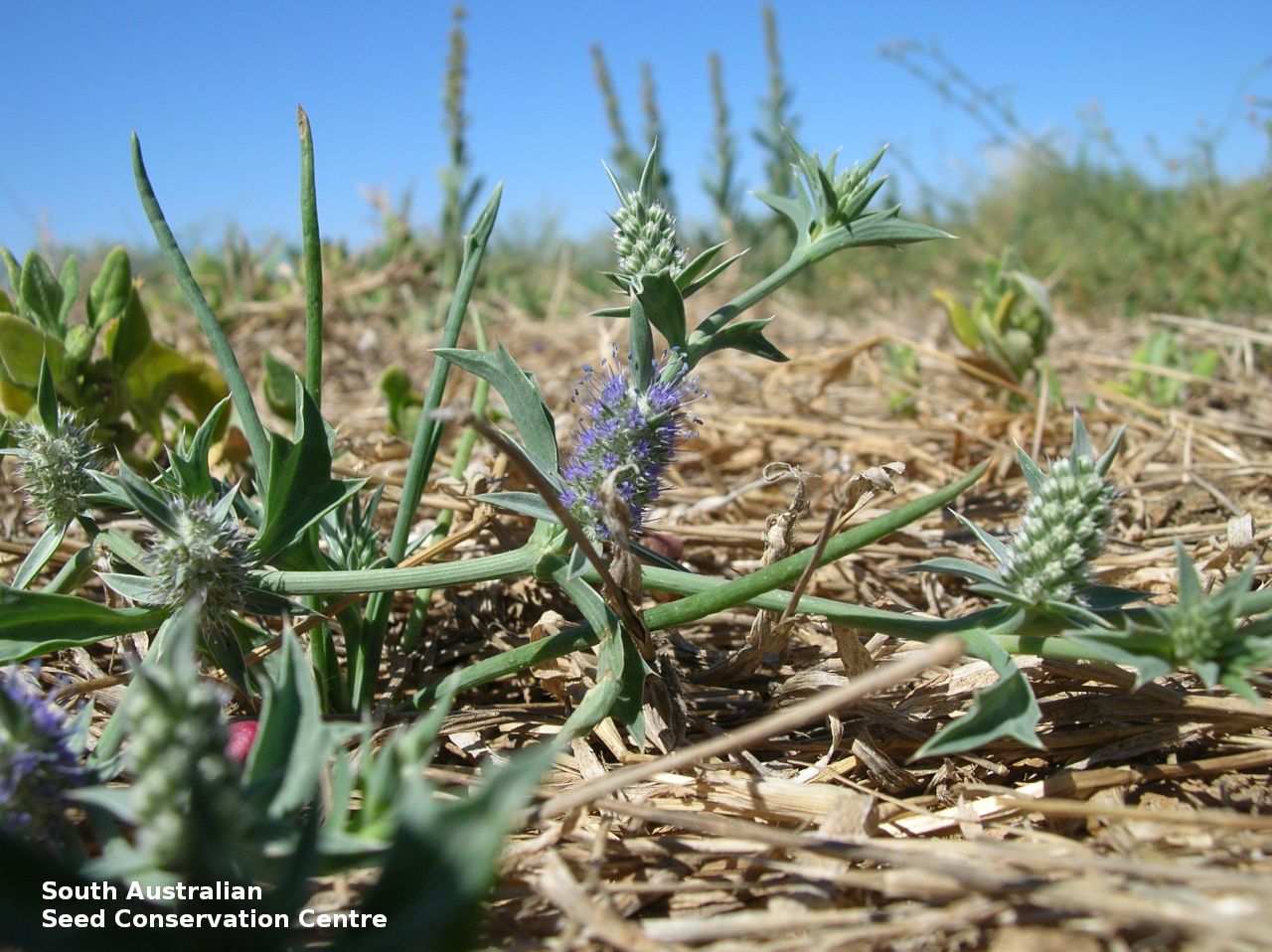
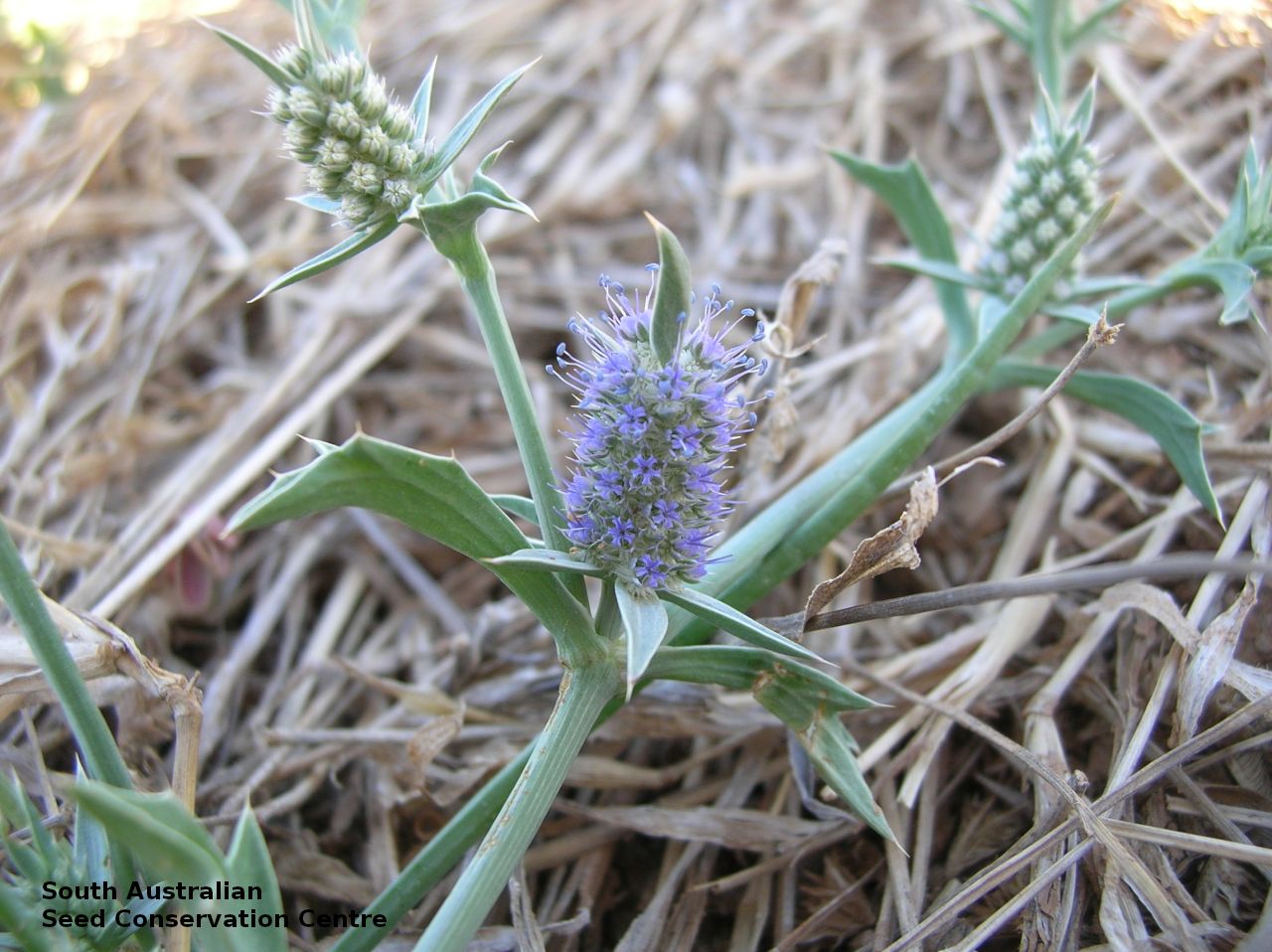
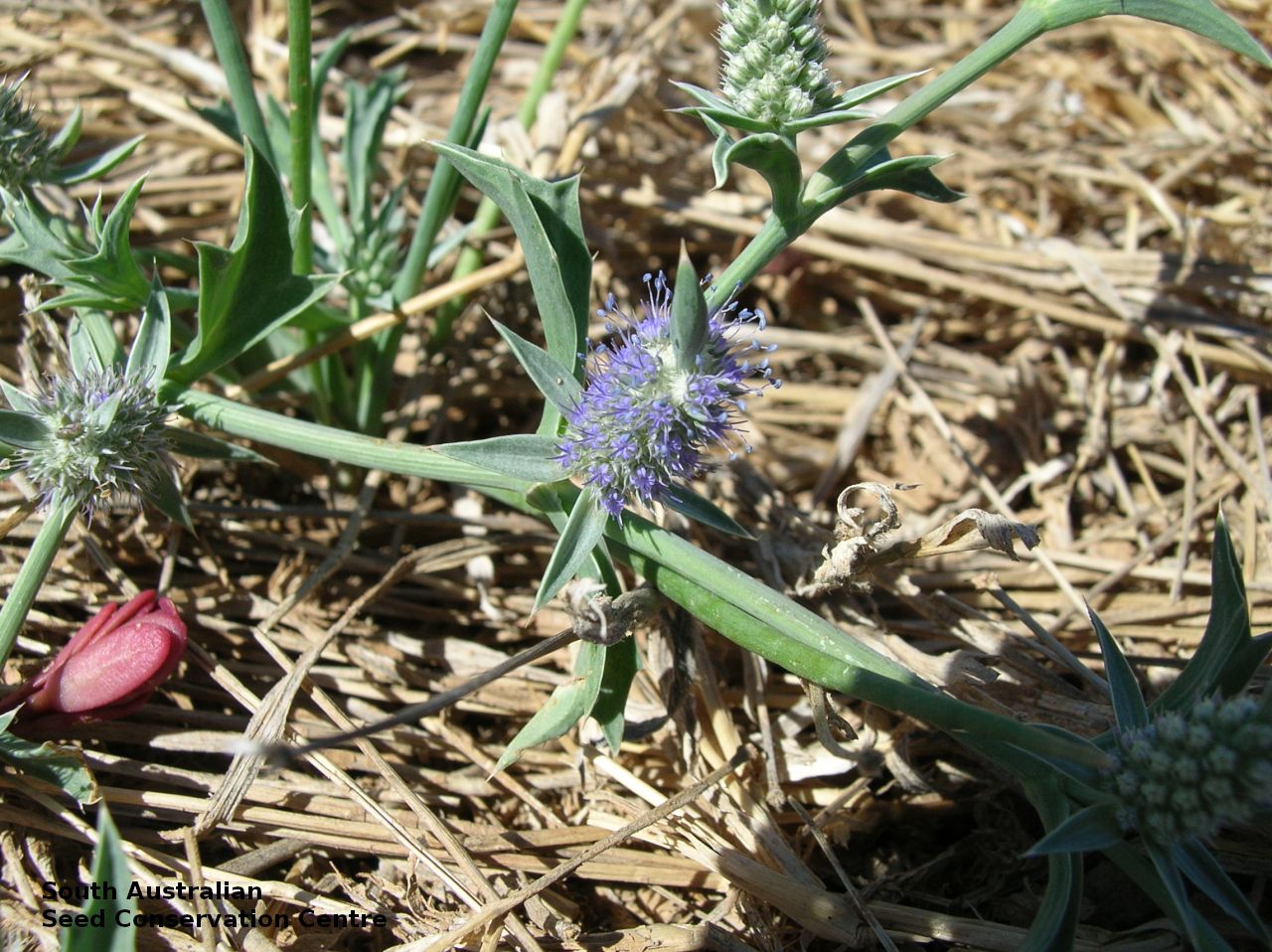
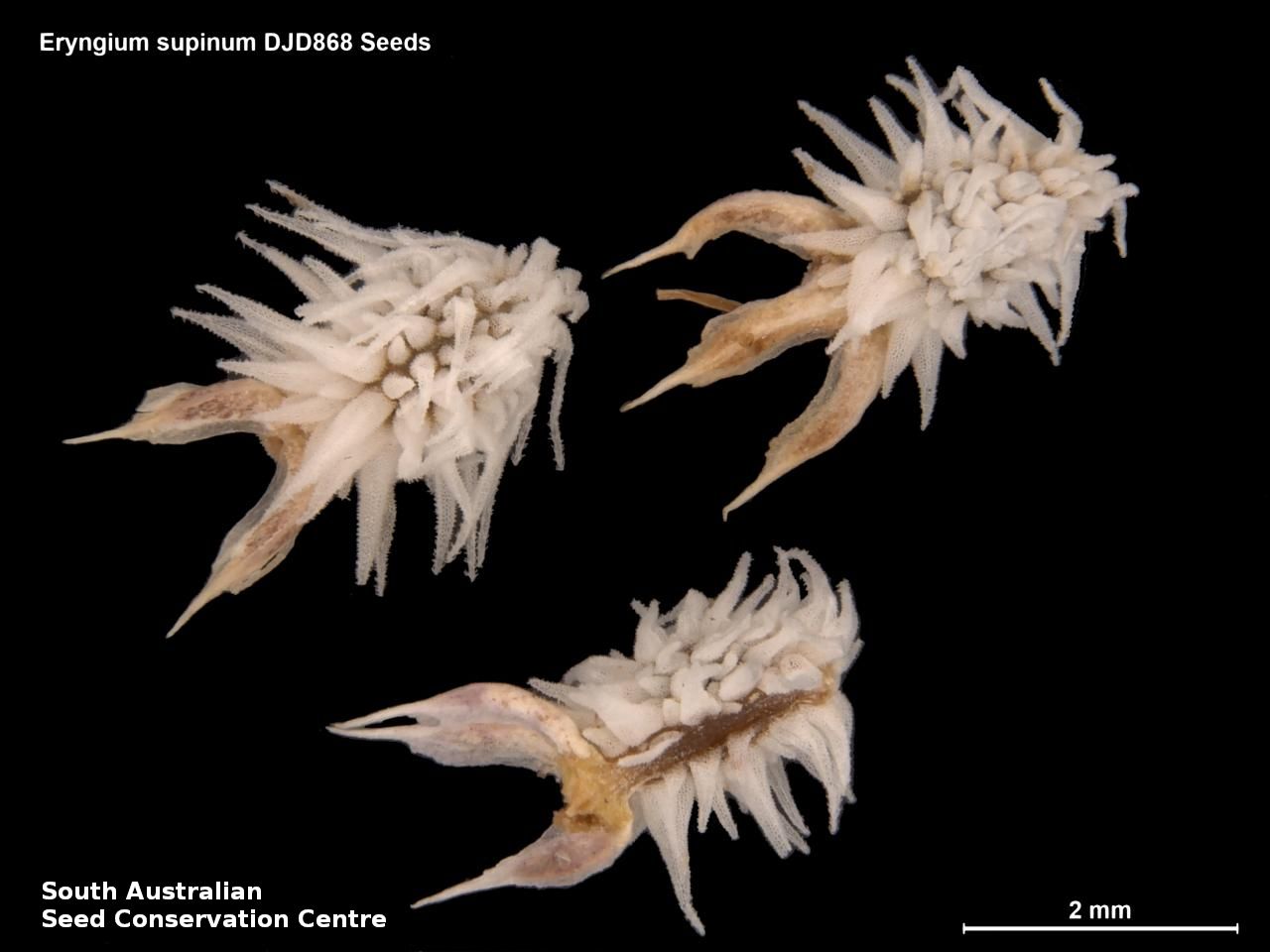

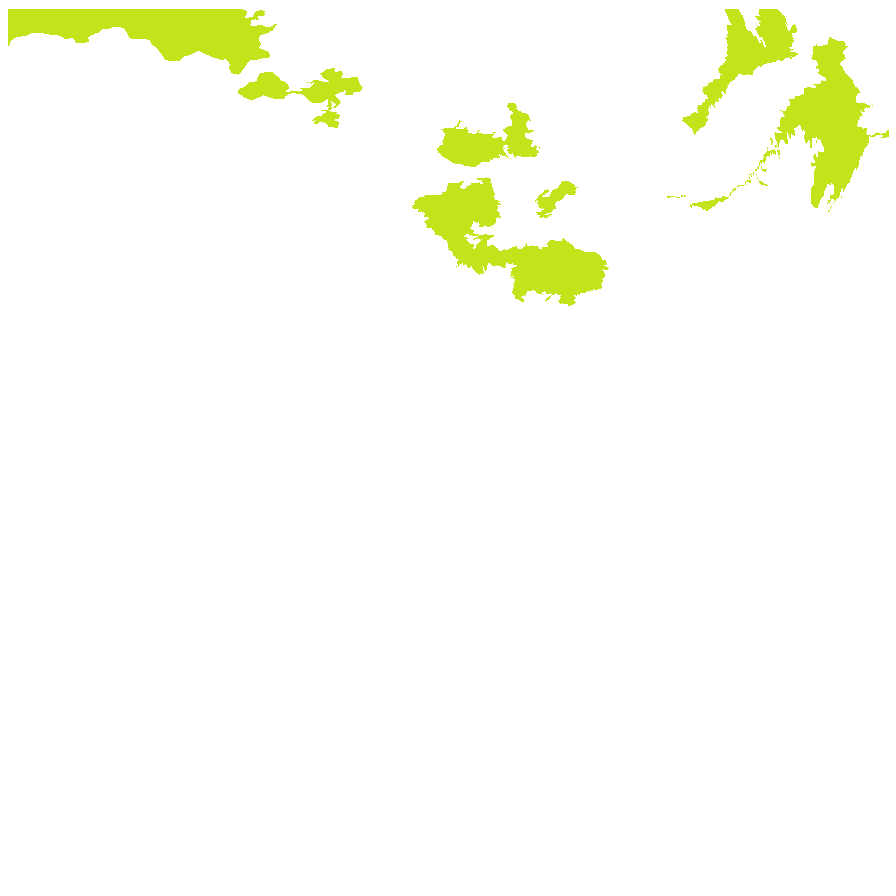
Prior names
Eryngium plantagineum, partly
Eryngium plantagineum, partly
Etymology
Eryngium from the Greco-Latin 'eryngion' meaning 'sea holly'. May also be from the Greek 'eryngano' meaning to belch, as the plant was used as a remedy for flatulence. Supinum from the Latin 'supinus' meaning bent backwards, or lying on the back; referring to the species prostrate habit.
Distribution and status
Found scattered in north-east South Australia growing on temporarily flooded ground on cracking clays. Also found in the Northern Territory, Queensland and New South Wales. Native. Uncommon in South Australia. Uncommon in the Northern Territory and New South Wales. Common in Queensland.
Herbarium region: Lake Eyre
NRM region: South Australian Arid Lands
AVH map: SA distribution map (external link)
Plant description
Procumbent or prostrate perennial herb with stiff, cylindrical, usually prostrate branches. Leaves almost flaccid with basal leaves flat, lanceolate, to 25 mm long and 6 mm wide, tapering into a longer (3-6 cm) tubular slender petiole; stem-leaves similar but larger (sometimes to 20 mm broad with 3 acute pungent-tipped lobes and sometimes denticulate below the lateral lobes). Flower-heads axillary, at first round, then cylindrical to 23 mm long and 10 mm wide; bluish flowers with green or purple bracts. Flowering between September and October. Fruits are spiky, pale-brown cylinder-shaped fruit head. Seeds are brown ovoid seeds to 4 mm long and 2 mm wide, covered in erect, thick white hair and with 2-3 spikes at one end. Seed embryo type is linear under-developed.
Seed collection and propagation
Collect seeds between September and December. Collect heads that are drying and turning a straw colour. Be careful as the plant can be very prickly. Collect more than what is required as not all seeds will be viable. Place the heads in a tray and leave to dry for two weeks. Then rub the heads with a rubber bung and not with your hands as the heads are prickly. Then use a sieve to separate the unwanted material. Use an aspirator (if available) to remove the lighter non-viable seeds from the heavy viable seeds. Store the seeds with a desiccant such as dried silica beads or dry rice, in an air tight container in a cool and dry place. From one collection, the seed viability was high, at 100%. Seeds are non-dormant, viable seed should germinate readily.
| Location | No. of seeds (weight grams) | Number of plants | Date collected | Collection number Collection location | Date stored | % Viability | Storage temperature |
|---|---|---|---|---|---|---|---|
| BGA MSB | 7,700 (7.4 g) 7,700 (7.4 g) | 70 | 26-Sep-2007 | DJD868 Lake Eyre | 19-Sep-2008 | 100% | -18°C |
Number of plants: This is the number of plants from which the seeds were collected.
Collection location: The Herbarium of South Australia's region name.
% Viability: Percentage of filled healthy seeds determined by a cut test or x-ray.